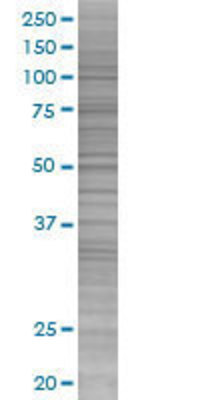| Gene Symbol |
PIM2
|
| Entrez Gene |
11040
|
| Alt Symbol |
-
|
| Species |
Human
|
| Gene Type |
protein-coding
|
| Description |
Pim-2 proto-oncogene, serine/threonine kinase
|
| Other Description |
pim-2 oncogene|pim-2h|proto-oncogene Pim-2 (serine threonine kinase)|serine/threonine protein kinase pim-2|serine/threonine-protein kinase pim-2
|
| Swissprots |
A8K4G6 Q9P1W9 Q99739
|
| Accessions |
BAA95613 CAH05302 CAH05303 CBX53832 EAW50729 EAW50730 Q9P1W9 AK290931 BAF83620 AK312745 BC018111 AAH18111 DC378253 DQ891336 ABM82262 DQ894518 ABM85444 U77735 AAC78506 XM_011543887 XP_011542189 NM_006875 NP_006866
|
| Function |
Proto-oncogene with serine/threonine kinase activity involved in cell survival and cell proliferation. Exerts its oncogenic activity through: the regulation of MYC transcriptional activity, the regulation of cell cycle progression, the regulation of cap-dependent protein translation and through survival signaling by phosphorylation of a pro-apoptotic protein, BAD. Phosphorylation of MYC leads to an increase of MYC protein stability and thereby an increase transcriptional activity. The stabilization of MYC exerted by PIM2 might explain partly the strong synergism between these 2 oncogenes in tumorigenesis. Regulates cap-dependent protein translation in a mammalian target of rapamycin complex 1 (mTORC1)-independent manner and in parallel to the PI3K-Akt pathway. Mediates survival signaling through phosphorylation of BAD, which induces release of the anti- apoptotic protein Bcl-X(L)/BCL2L1. Promotes cell survival in response to a variety of proliferative signals via positive regulation of
|
| Tissue Specificity |
Highly expressed in hematopoietic tissues, in leukemic and lymphoma cell lines, testis, small intestine, colon and colorectal adenocarcinoma cells. Weakly expressed in normal liver, but highly expressed in hepatocellular carcinoma tissues. {ECO:0000269|PubMed:18675992}.
|
| Top Pathways |
Acute myeloid leukemia
|

